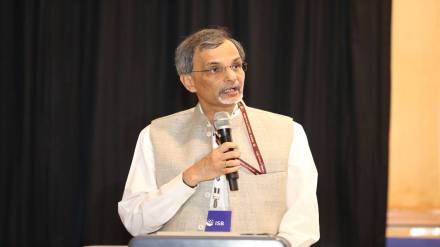If numbers tell a story then India stands tall. Delivering the keynote address at the Data User’s conference, organised at the Indian School of Business (ISB) on Tuesday, May 27th, in Hyderabad, V. Anantha Nageswaran, Chief Economic Adviser, Government of India, said, “right now India’s macroeconomic numbers paint a very promising picture.” Quoting numbers from the second advanced estimates published by the National Statistics office, he said, the real GDP has been estimated to grow by 6.5 per cent in FY 2024-25 and the nominal GDP growth rate pegged at 9.9 per cent in FY 2024-25. Terming these numbers as the highest among the major economies of the world, Nageswaran drew comfort in the growth estimates staying healthy in all the three crucial sectors of industries (especially construction), services and the agriculture sector which is expected to rebound to 4.6 per cent in 2024-25. Up from 2.7 per cent in 2023-24.
Private Final Consumption Expenditure (PFCE) is expected to register a good growth of 7.6 per cent during 2024-25 as compared to 5.6 per cent growth observed during 2023-24. Private consumption as a share of nominal GDP is expected to increase from 60.2 per cent to 61.5 per cent. This, he reminded, was the highest share since 2003-04. “In a world that is seeing debates in countries on what they need to do to boost domestic demand, India’s high consumption share of GDP is an important factoid that people have to keep in mind,” he said. Equally critical and enthusing were the trends in gross fixed capital formation with all the figures on the macroeconomic indicators “enriching the understanding of the stability of the economy, policy planners,” he said, “need more than reassurance from aggregates especially in times that we are in.” Apparently referring to trends in global trade, investments and political uncertainties occupying the mind space of many globally. “For the era that we are in conviction for policy reform will be sustained by the pulse of granular data. In this context, MoSPI’s flagship initiatives which bring out granular data on India’s diverse private sector activities have the potential to transform decision-making in the years ahead,” he opined.
The conference organised at the ISB was in partnership with the National Statistics Office (NSO), Ministry of Statistics and Programme Implementation (MoSPI), Government of India, and the Indian School of Business. It was titled “the Data User’s Conference on the results of Annual Survey of Unincorporated Sector Enterprises (ASUSE) 2023-24 and the Forward-Looking Survey on Private Sector Capital Expenditure (CAPEX) Investment Intentions.” The organisers of the conference set out with a goal to foster constructive dialogue between data producers and data users, facilitate knowledge exchange and to showcase India’s rigorous data collection as a foundation for transformative policy reforms. This point about the possibility of solid granular data driving transformative policy measures was also underlined by Nageswaran.
Saurabh Garg, IAS, Secretary, MoSPI, spoke of the enhancements in data dissemination through an upgraded portal featuring API access, interactive visualisations, and strategic collaborations with academic and global partners— all these as steps towards enabling more effective and localised decision-making.
Professor Madan Pillutla, Dean, ISB, who hoped the conference would prove to be a first among the many more such meets, emphasised that in an era of advanced analytics, the integrity of data is critical for building robust predictive models and deriving actionable insights. He also referred to this being a milestone year for the school as it was ISB’s 25 years devoted to research and its ongoing partnership with government agencies to drive informed decision-making.
